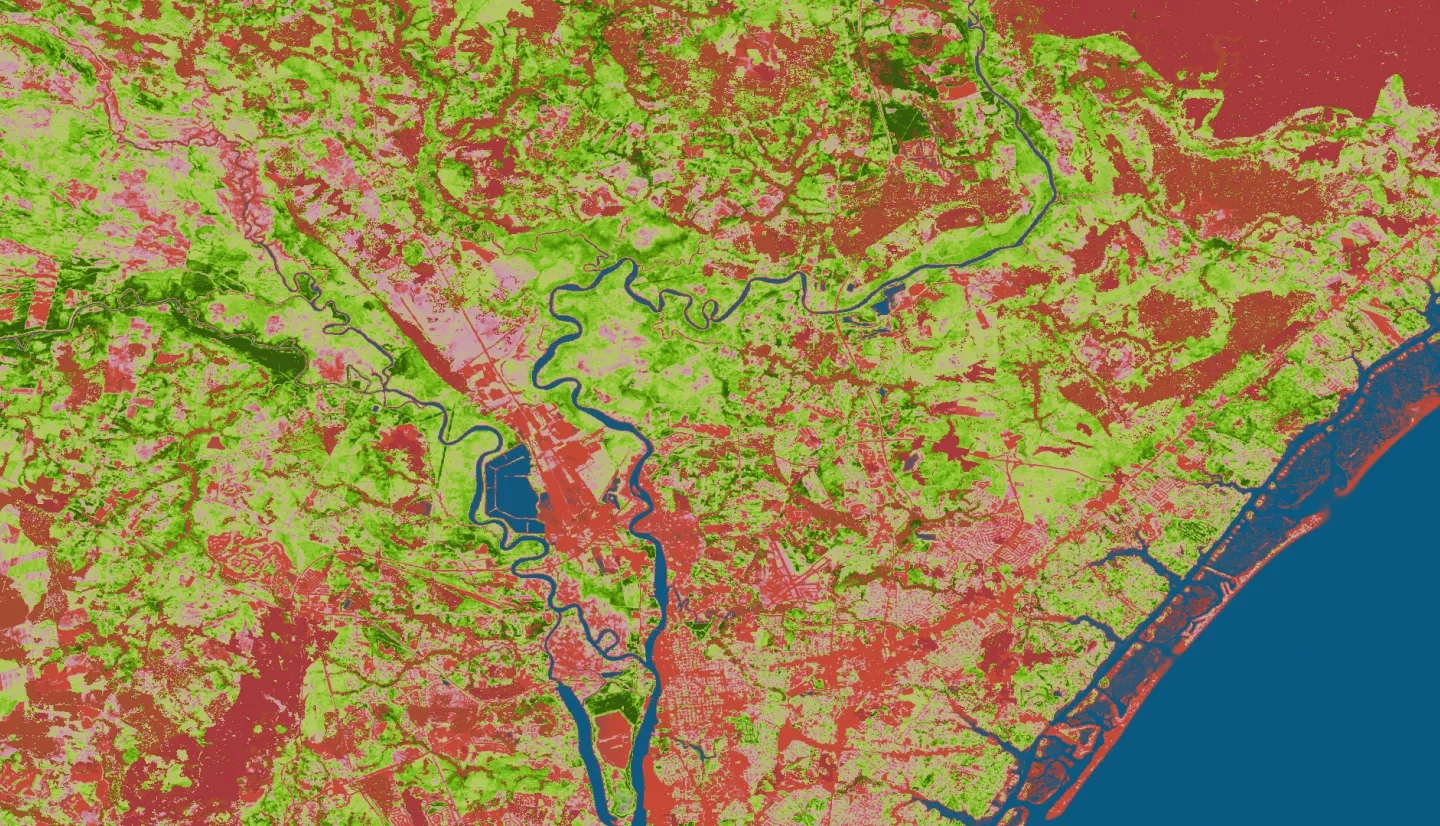Carolina Coastal Plain Ecological Forecasting (Fall 2021)
Team: Monika Rock (Project Lead), Katie Caruso, Jayne Lampley, Ashna Siddhi, Seamore Zhu, and
Summary: Although the carnivorous plant Venus flytrap (Dionaea muscipula) is recognized globally, its native range is restricted to a small portion of the North and South Carolina Coastal Plain and Sandhills. Within this limited range, Venus flytrap populations are threatened by habitat loss, fire suppression, and poaching. NASA DEVELOP partnered with the North Carolina Botanical Garden (NCBG), the University of North Carolina Herbarium (NCU), and the North Carolina Natural Heritage Program (NCNHP) to support Venus flytrap conservation. The team developed models based on species presence data and environmental variables using the Software for Assisted Habitat Modeling (SAHM) to create a 2021 habitat suitability map for Venus flytrap. These models incorporated Earth observations collected by Landsat 8 Thermal Infrared Sensor (TIRS), Terra Moderate Resolution Imaging Spectroradiometer (MODIS), Advanced Land Observation Satellite (ALOS) Phased Array type L-band Synthetic Aperture Radar (PALSAR), and Sentinel-2 Multispectral Instrument (MSI). To predict areas at high risk of development, the team produced a 2050 land-use change map using TerrSet Land Change Modeler. The team found potential areas of conflict between predicted habitat and forecasted future development. Many areas of suitable habitat were concentrated along the coast where development was likely to occur, placing populations there at risk of extirpation. Overlaying suitable habitat with forecasted land change also identified suitable habitats with minimal risk of development, which may serve as lasting Venus flytrap habitat. These results can inform the NCBG and NCNHP’s conservation decision-making, including targeted seed banking, reintroduction, and prioritization of enduring habitats for protection and management.
